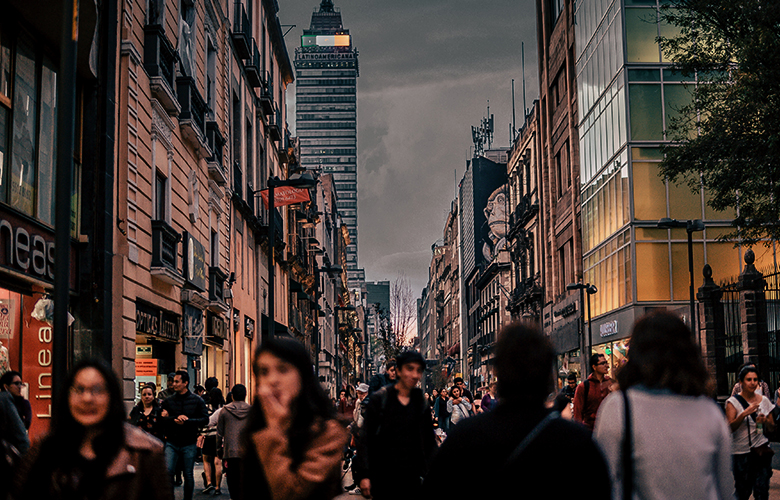
How do you lead thirty eight actors, over twenty creatives, countless crew and staff, and an audience of thousands, all who speak a different language, live in a different country, and grew up with a culture other than your own?
Those are the questions I faced when I had the honor and pleasure of directing and choreographing Hello, Dolly! at Teatro Insurgentes in Mexico City this past fall.
What I learned: storytelling, in its most basic form, is absolutely universal and has the power to connect us all.
This was my first experience creating a show in a country outside of the US. Going in I realized that I was facing many challenges, but I didn’t realize that those challenges would ultimately provide the biggest learning experiences. (Disclaimer: I did work on the recent Broadway Revival of Hello, Dolly! so I was very familiar with the material.)
Let me start off by saying I do not speak Spanish. I mean REALLY do not speak Spanish. My abilities end at around “hola!” and “dónde está el baño?” So you can imagine my anxiety the first time I opened the script for the Mexican production. What we all use as a roadmap for storytelling was as useful to me as an AAA map to a millennial. Additionally, two of the biggest stars in Mexico were set to play Dolly and Horace Vandegelder.
When I asked myself this question the answer became very clear – there are many other ways to communicate. My version and subsequently the Mexican version of Hello, Dolly! had to have a dramatically different approach.
While working on book scenes with the actors I quickly realized that the storytelling, the action, the intention had to be so clear that it transcended the Spanish language. So clear that an English speaker who knows very little Spanish could not only understand what was going on, but be invested and moved by the story. Collectively we all realized that the only way to do this is out of the mother of invention: necessity.

We started where I always start – the text. But because much can be lost in translation the text had to be only a springboard. It had to influence every thought, step, and nuance, but if we relied solely on the Spanish text then I’d have no idea what was going on. Duh, right?
But I (and without speaking for my colleagues but many other theatre creators) never realized how heavily the oral text is relied on as a driving force of communication in modern day theatre storytelling.
Not only the body, but the space between the bodies and their relationship to everything around them was heightened and a force telling the story equally if not surpassing the verbal text. This resulted in a very physical production with incredibly complex characters and extremely thought provoking scenes and ultimately a new way to look at this material. What was born was a fresh Hello, Dolly! and an inherently Mexican Hello, Dolly! We created a traditional show in a very nontraditional way.
Ultimately I took away many things from Hello, Dolly! in Mexico City, most in a way only theatre can teach: a new found love of a culture. People who are amongst the most giving and caring you will ever meet. Strangers who became new friends and friends who have become family. We found a new way to approach how we tell stories, how we communicate and ultimately in a world ( and sadly perhaps more specifically my own country) that perpetuates isolationism, a new way to connect.
Paying It Forwards: Dance, Dignity & Respect
Success And Rejection On Broadway
Published in collaboration with The Ensemblist
Listen to the Ensemblist Podcast
The Ensemblist: Instagram, Facebook, Twitter


THE ENSEMBLIST IS AN ONLINE ADVOCATE FOR THE TALENTED ARTISTS WHO WORK IN BROADWAY ENSEMBLES. What started as an audio podcast for those curious about how Broadway really works turned into an avenue for young and aspiring professional artists to learn more about theatre from in the inside out. In addition to more than 150 podcast episodes, available on Apple podcasts, Stitcher, TuneIn and Podbean, The Ensemblist’s blog features daily posts from artists about their work and lives. The Ensemblist is also active on both Instagram and Twitter, with more than 10,000 followers on each platform. Through our posts, podcasts and features, we are changing the conversation about what it means to be a successful theatre artist.
Read Full Profile© 2021 TheatreArtLife. All rights reserved.

Thank you so much for reading, but you have now reached your free article limit for this month.
Our contributors are currently writing more articles for you to enjoy.
To keep reading, all you have to do is become a subscriber and then you can read unlimited articles anytime.
Your investment will help us continue to ignite connections across the globe in live entertainment and build this community for industry professionals.